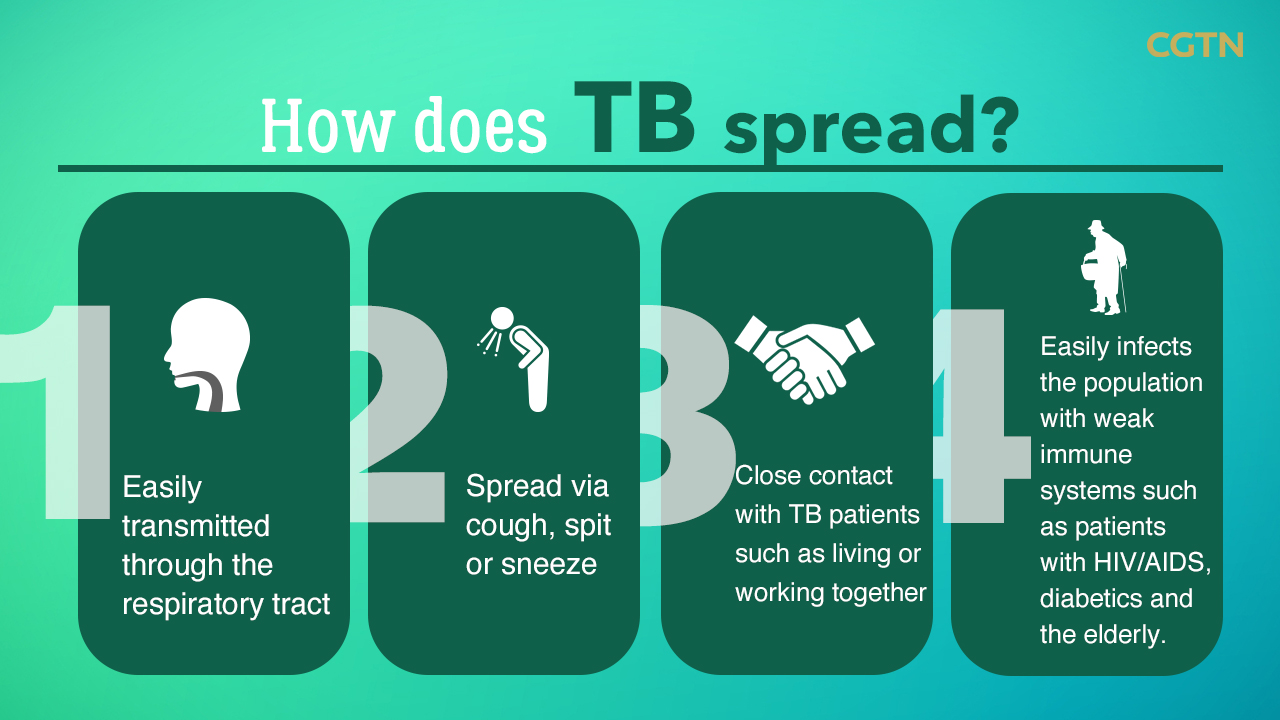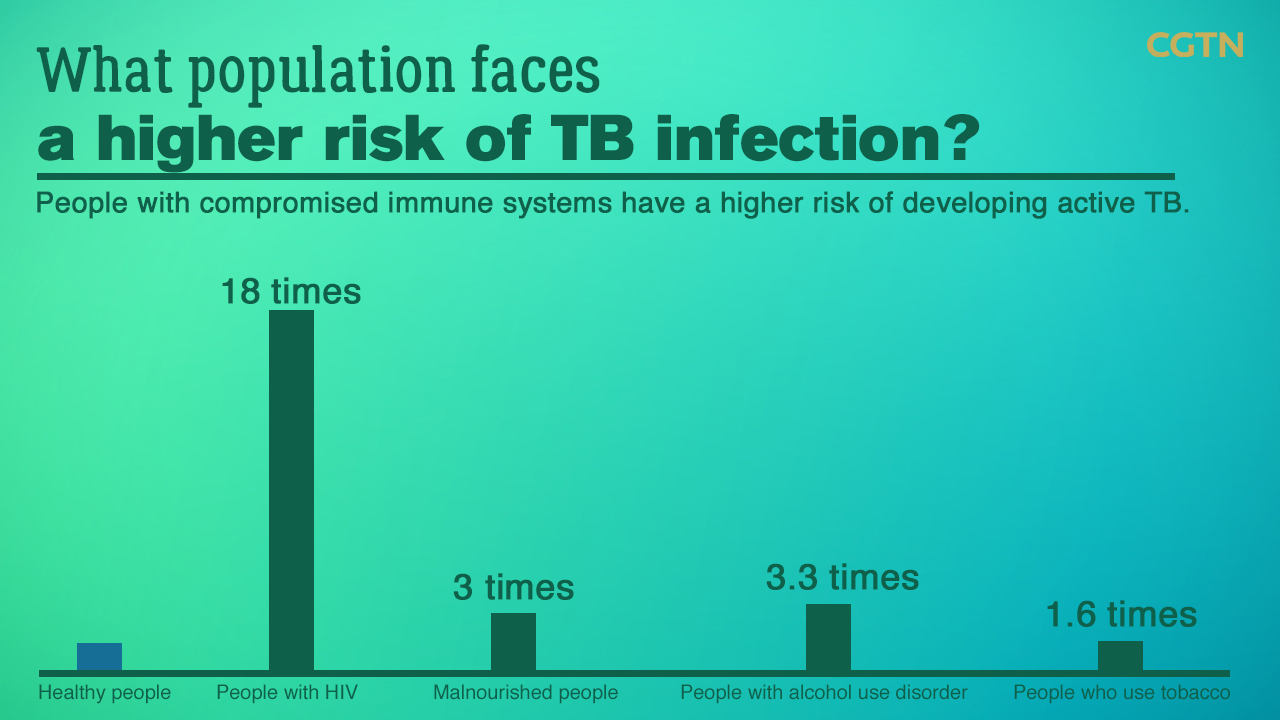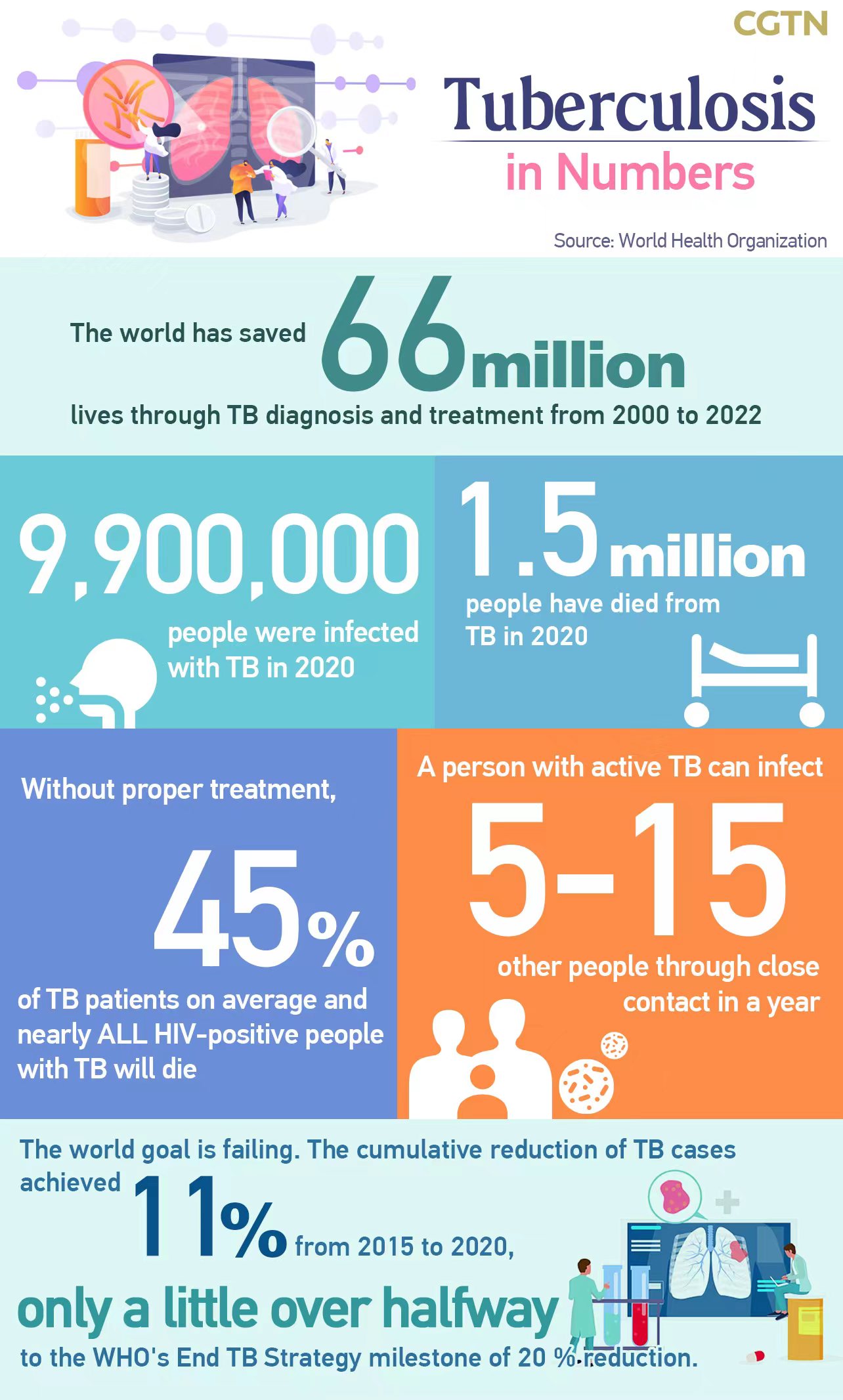
A medic gives a TB screening for enrolled freshmen in a middle school in Xuancheng in east China's Anhui Province, October 15, 2019. /CFP
A medic gives a TB screening for enrolled freshmen in a middle school in Xuancheng in east China's Anhui Province, October 15, 2019. /CFP
As one of the oldest infectious diseases, tuberculosis (TB) has plagued the world for centuries. Yet despite growing awareness and a stronger resolve to stamp it out, the disease continues to be relentless. In China, while the fight against TB still faces many challenges, experts say they have identified them and believe real progress will soon be made.
TB is not only the thirteenth most common cause of death in the world but also the second most-deadliest infectious disease. In the face of the devastating health consequences, the World Health Organization (WHO) has proposed a strategy to end TB by 2035, an effort in concert with the United Nations Sustainable Development Goals (SDGs) which have also included targets to combat the disease. However, experts say it remains highly difficult to reach these goals.
"The progress made to reach these goals is far from satisfactory," Tang Shenglan, a professor from Duke University School of Medicine, said at a virtual seminar on Monday.

Graphics by CGTN's Jia Jieqiong
Graphics by CGTN's Jia Jieqiong
The SDGs call for a 90 percent reduction in TB deaths and an 80 percent reduction in tuberculosis incidence rate by 2030, compared to the 2015 baseline, as well as the complete eradication of catastrophic expenditures by TB-affected families. But as of 2019, 49 percent of the world's TB patients still faced catastrophic costs, and while that was an improvement, there is still a long way to go, Tang said.
He pointed out that the COVID-19 pandemic has cast a deeper shadow over the goal of ending TB, with the patient detection rate falling and treatment being forcibly interrupted.
According to a 2019 estimate by the WHO, about 66,000 TB patients who were resistant to Rifampicin, an antibiotic, were detected in China, ranking the country second in the world. As drug resistance means longer treatment periods, higher treatment costs and greater difficulties in curing the disease, China is considered one of the high-burden countries, with over 19 percent of TB patients facing catastrophic expenditures.
Mao Zongfu, a professor at Wuhan University School of Public Health and director of the Wuhan University Global Health Research Center, attributed the situation in China to four factors: developing countries with large populations are more likely to be high-burden; China's tiered fiscal and taxation system has led to an uneven distribution of funds designed to fight the disease; the three-tiered public health system is fragmented and riddled with competition, which leads to perverse incentives in the health care sector; valid vaccines are lacking and motivation for innovation is insufficient.

Graphics by CGTN's Jia Jieqiong
Graphics by CGTN's Jia Jieqiong
As a high-burden country, China has committed a great deal of efforts and resources to TB prevention and control. Tang said over 90 percent of the country's population, including most TB patients, is covered by basic health insurance.
Basic health insurance also treats TB patients more preferably, with the reimbursement ratio reaching 60-70 percent or higher for multidrug-resistant patients.
At the state level, the government has introduced policies to further ally patients' financial strains, including expanding the scope of health insurance coverage and centralizing the effort to purchase drugs, according to Mao, who also attended Monday's seminar.
Local governments have also worked out their paths to tackle the disease, he said. In northwest China's Ningxia Hui Autonomous Region, for example, all cities and counties are required to designate a certain amount of the local fiscal budget to combat TB.
But problems still remain, and the goal of eradicating high treatment costs still faces many challenges.
Under China's current model, the responsibility of preventing, treating and controlling TB lies with designated hospitals. But a profit-oriented approach by some hospitals may lower their incentive in disease prevention, said Chen Jiaying, director of the Department of Humanities and Management at Nanjing Medical University.
Health insurance has played a limited role in incentivizing medical facilities to regulate their conduct. Overcharging for redundant services is seen among them, Chen said, adding that there is a greater need to infuse health insurance with that role.
TB prevention is the most economical means to fight the disease, and that's why it is imperative to raise public awareness, Mao said.
Other than that, he said supervision on health insurance funds and the quality of clinical care should be strengthened, a public health system that caters more to TB patients should be established, and the drug purchasing model should be innovated to lower the prices of anti-TB medicines.

Graphics by CGTN's Yu Peng
Graphics by CGTN's Yu Peng

